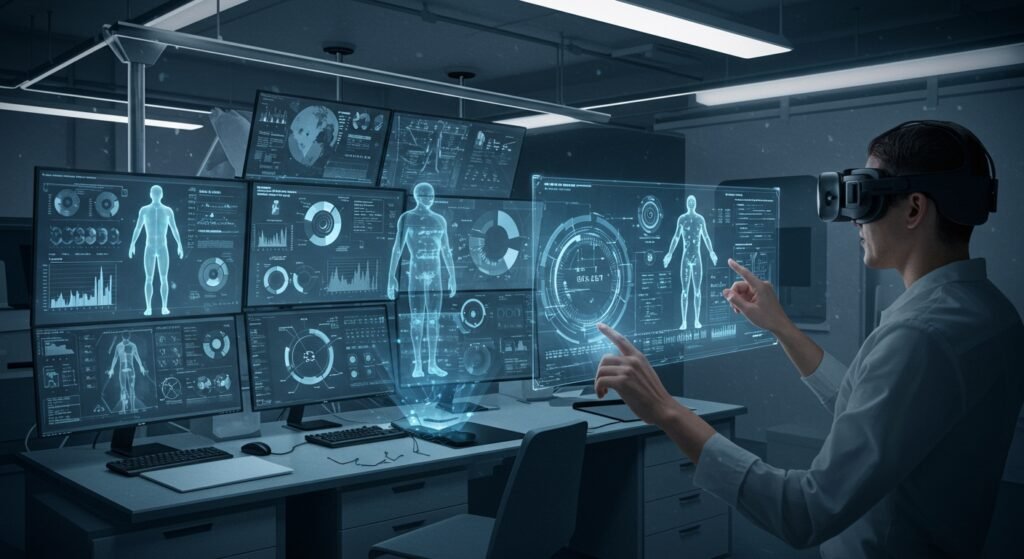Sustainability in Industrial Design: 7 Revolutionary Steps for a Greener Future
The imperative for Sustainability in Industrial Design has never been more pressing. As global resource depletion accelerates and environmental concerns mount, industrial designers are at the forefront of a paradigm shift. Moving beyond mere aesthetics and functionality, modern design now integrates ecological responsibility from conception to end-of-life. This holistic approach ensures that products not only serve their purpose but also minimize their environmental footprint, heralding a new era of eco-conscious innovation.
Table of Contents
- The Imperative for Sustainability in Industrial Design
- Key Principles of Sustainable Industrial Design
- Innovations and Technologies Driving Change
- Challenges and the Path Forward
- The Future of Industrial Design: A Circular Vision
The Imperative for Sustainability in Industrial Design
The traditional linear ‘take-make-dispose’ model of production has led to significant environmental degradation, including overflowing landfills, excessive carbon emissions, and resource scarcity. Consumers are increasingly demanding environmentally friendly products, while stricter regulations push industries towards greener practices. For industrial designers, this means a shift from merely creating desirable objects to designing responsible ones. Embracing Sustainability in Industrial Design isn’t just a trend; it’s a fundamental necessity for planetary well-being and long-term economic viability. It involves a deep understanding of product lifecycles and their ecological impact.
Key Principles of Sustainable Industrial Design
Material Selection and Sourcing
At the core of sustainable design lies the conscious choice of materials. This involves prioritizing renewable, recycled, non-toxic, and biodegradable inputs over virgin, resource-intensive alternatives. Designers are increasingly exploring innovative biomaterials, such as mushroom-based packaging or algae-derived plastics, and optimizing existing materials for maximum recyclability. The focus extends to local sourcing to reduce transportation emissions and supporting ethical supply chains.
Design for Longevity and Disassembly
Products designed for durability, repairability, and upgradability inherently reduce waste. Instead of planned obsolescence, sustainable industrial design promotes products with extended lifespans. Furthermore, designing for disassembly ensures that components can be easily separated for repair, reuse, or recycling at the end of the product’s first life. Modular designs, for instance, allow for parts to be swapped out or upgraded, prolonging the overall utility of the item.
Energy Efficiency and Production
Sustainable design considers the energy consumed throughout a product’s entire lifecycle – from manufacturing processes to daily use. This includes optimizing production methods to reduce energy intensity, utilizing renewable energy sources in factories, and designing products that are highly energy-efficient during their operational phase. Simple design choices, like optimizing product weight for reduced shipping energy or improving insulation for thermal products, contribute significantly to overall energy savings.
Innovations and Technologies Driving Change
Technological advancements are powerful enablers of sustainable industrial design. Additive manufacturing (3D printing) allows for on-demand production, reducing material waste and enabling complex geometries with less material. Advanced recycling techniques are making it possible to recover higher quality materials from waste streams. Furthermore, the Internet of Things (IoT) can track product usage and condition, facilitating predictive maintenance and optimizing resource use. The integration of artificial intelligence in design software also helps designers assess environmental impacts more accurately during the early stages of development.
Comparison of Traditional vs. Sustainable Design Approaches
| Criteria | Traditional Design | Sustainable Design |
|---|---|---|
| Focus | New sales, low upfront cost | Lifecycle impact, value retention |
| Materials | Virgin, cheap, easily disposable | Recycled, renewable, non-toxic, biodegradable |
| End-of-Life | Landfill, incineration | Reuse, recycle, compost, remanufacture |
| Energy Use | High, reliance on fossil fuels | Optimized, renewable sources where possible |
| Product Lifespan | Often short, planned obsolescence | Long, durable, repairable, upgradable |
Challenges and the Path Forward
Despite the growing momentum, challenges persist. Higher upfront costs for sustainable materials and manufacturing processes can deter adoption. Supply chain complexities in sourcing eco-friendly inputs and establishing robust recycling infrastructure also pose hurdles. Consumer awareness and willingness to pay a premium for sustainable products remain critical. However, organizations like the Ellen MacArthur Foundation are leading the charge in promoting circular economy principles, providing frameworks and research to accelerate the transition.
The Future of Industrial Design: A Circular Vision
The ultimate goal for industrial design is to move towards a truly circular economy, where waste is eliminated, resources are kept in use, and natural systems are regenerated. This involves designing products that can be perpetually cycled, either through technical loops (reusing, repairing, recycling components) or biological loops (composting biodegradable materials). Concepts like ‘product-as-a-service,’ where companies retain ownership and maintain products, are gaining traction, ensuring maximum resource utilization. For more insights into material choices, explore our guide on Choosing Eco-Friendly Materials.
Conclusion
Sustainability in Industrial Design is more than a design trend; it’s a fundamental shift towards a responsible and resilient future. By integrating sustainable principles from concept to disposal, industrial designers have the power to mitigate environmental impact, drive innovation, and create products that truly serve both humanity and the planet. The journey is complex, but the collective efforts of designers, manufacturers, and consumers will pave the way for a regenerative world where design is synonymous with environmental stewardship.


